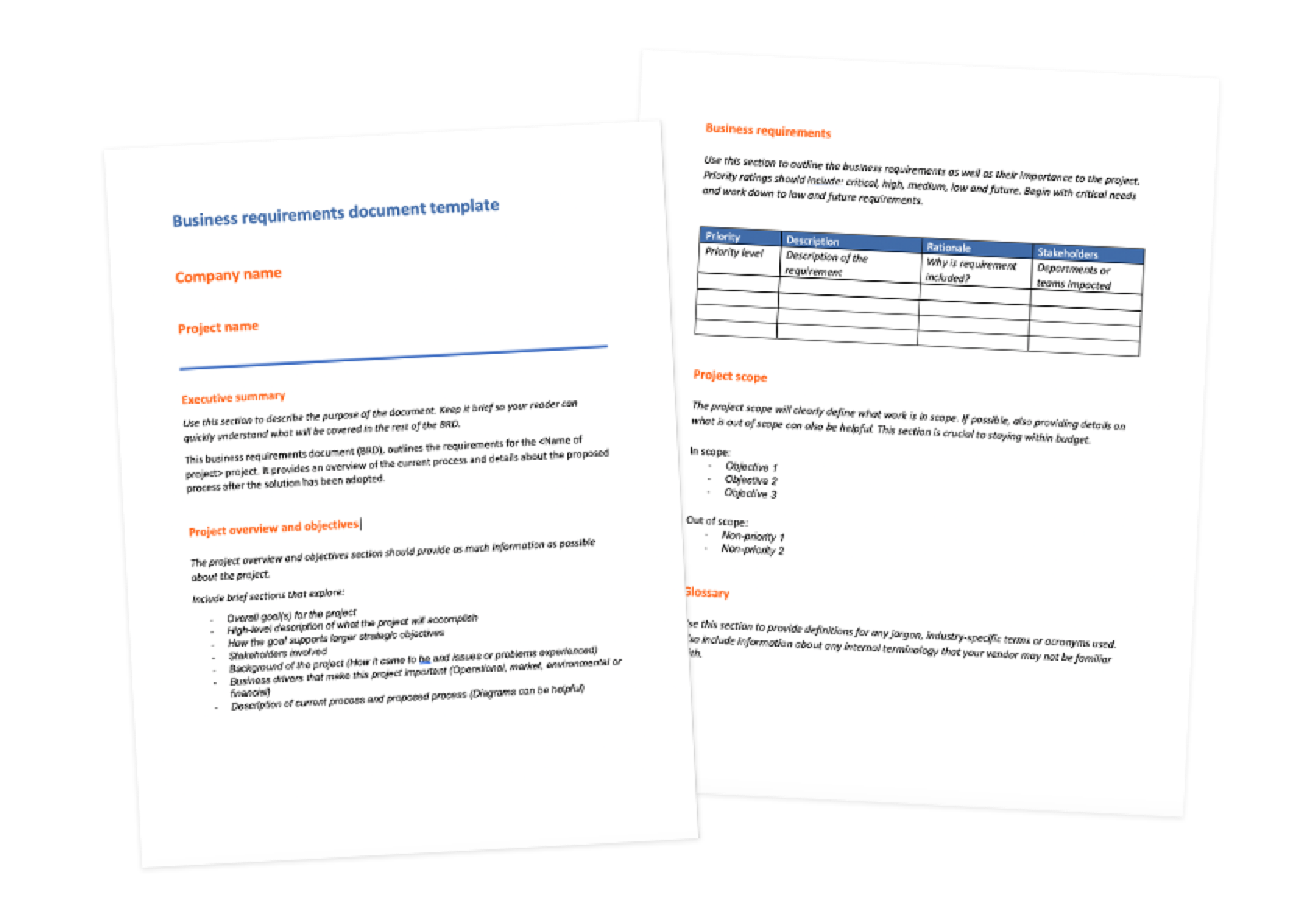¶ Business Requirements Document
¶ What it is
The Business Requirements Document(BRD) is the starting point for upcoming projects. Its core purpose is essential for high-level corporate decision evaluation before a product is developed. It usually contains market analysis, sales strategy, profitability forecasts, and other elements related to business objectives or value rather than product details. The document helps align team members on what to build, why to build it, and how to get it done.
¶ Why it is useful
For corporate executives, BRD is an essential basis for their business decisions. For the product team, the BRD can help them drive projects forward and gain access to additional resources. Meanwhile, for the team, the BRD paints a complete picture of the potential project, which can get every stakeholder on the same page regarding what is expected of them and what the final product will look like. The document helps monitor the overall project and reduces failure due to misaligned or misrepresented requirements.
¶ When to use it & Who is involved
The BRD is created before a project starts and is usually the earliest document in the product lifecycle. A BRD is generally prepared by the product manager, business analyst, or anyone who wants to propose a requirement. The project manager, business partners, and key stakeholders will also be involved. The primary audience will be company executives, project sponsors, the business team, and directors of various departments.

¶ How to use it
While there is no fixed structure that a BRD needs to follow, it generally includes the following sections and topics:
-Executive Summary
The executive summary provides a concise summary of the project’s requirements, which offers a high-level statement of the project. It is usually written after the whole BRD is completed.
-Business Objectives
Write the project objectives following the SMART format (specific, measurable, attainable, realistic, and time-bound).
-Project Background
The project background mainly contains the sources of requirements as well as the market analysis. The requirements can be analysed from both the customer and the partner sides, i.e., to meet the customer's needs and to enable the partner to benefit from the cooperation. The market analysis often includes market size and potential, macro environment analysis (e.g., PEST analysis), competitor analysis, future trends, etc.
-Product Planning
The product planning contains the product positioning, the target customers, the product content, the scope of work, and the work plan. The product content lists and defines the features and necessary functional&non-functional requirements. The range of work draws the project's boundaries, including a detailed overview of project objectives, milestones, project deliverables, and acceptance criteria. The estimated work plan contains the resources to be invested in the project and the product roadmap. In this section, you don’t need to involve too much content about the detailed shape or implementation of the product.
-Business Model
The business model describes how the product will be profitable, which is what the executives mainly focus on. You can prove the business value of the product to the executives by predicting a business goal through data.
-A List of Stakeholders
List your project's internal and external critical stakeholders, and outline each person’s role and responsibilities.
-Cost-Benefit Analysis
This section holds a detailed list of all the costs and savings involved in the project. You need to present relevant facts and figures to convince your executives that the project’s benefits outweigh its price, which means it is worth the investment.
-Constraints and Limitations
Specify all the limitations and constraints you will be working within the project. The team should be aware of the potential obstacles in the future and make preparations or allocate resources to overcome them.
-Schedule, Timelines, and Deadlines
Set a detailed schedule that includes deadlines, milestones, and a monitoring system. This will help you keep key stakeholders updated on the project at different phases.
¶ Do's & Don't
Do's
- Be specific and detailed - this document is a key deliverable that will form the cornerstone for future work.
- Include the whole project team in compiling this document.
Don't
- Don’t rush it - ensure clarity and quality through reviews will relevant team members.